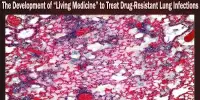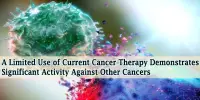According to a new study, the malaria medicine hydroxychloroquine blocks mechanisms that generate cisplatin resistance in head and neck tumors and restores cisplatin’s tumor-killing properties in animal models.
The findings, which were published today in the Proceedings of the National Academy of Sciences by scientists from the University of Pittsburgh and UPMC, clear the way for a clinical trial using cisplatin and hydroxychloroquine to treat chemotherapy-resistant head and neck tumors.
To kill the parasite, malaria is treated using prescription medications. Malaria medicines aren’t always successful in preventing the sickness. The pills should be taken in conjunction with other preventive measures such as using insect repellent, wearing long sleeves, and using a net or other type of bed treatment to protect the patient’s sleeping space.
“When caring for patients with head and neck cancers, I often see chemotherapy fail. Cisplatin is a very important chemotherapy drug, but tumor resistance to cisplatin is a huge problem,” said co-senior author Umamaheswar Duvvuri, M.D., Ph.D., head and neck surgeon at UPMC Hillman Cancer Center and professor of otolaryngology in Pitt’s School of Medicine. “My lab is interested in understanding the mechanisms of resistance so that we can find better ways to treat these patients.”
A protein named TMEM16A has been associated to cisplatin resistance in patient malignancies in previous studies. Overexpression of this protein, which is found in roughly 30% of head and neck malignancies, is linked to a worse chance of survival.
Ion channels are a family of proteins that includes TMEM16A. These proteins, which straddle the cell’s outer envelope, provide a pathway for chloride ions, which govern muscle and nerve activity as well as salt and water transport.
These experiments suggest that hydroxychloroquine has a synergistic effect with cisplatin. This is relevant for patients because repurposing hydroxychloroquine, which is an existing drug, will allow us to translate these findings to the clinic much faster than we could with a novel compound.
Umamaheswar Duvvuri
Duvvuri was astonished by the association between TMEM16A and cancer because poor chloride transport is usually associated with neurological and kidney illnesses such epilepsy, cystic fibrosis, and kidney stones.
“It’s always been a bit of a puzzle as to why an ion channel is upregulated in cancer,” he said. “This research provides important clues towards solving this puzzle.”
According to the current research, TMEM16A enhances cisplatin ejection in cellular compartments known as lysosomes. Lysosomes operate as a recycling and waste disposal system in a healthy cell, breaking down molecules for reuse and eliminating cellular debris.
According to first author Avani Vyas, Ph.D., a postdoctoral associate at Pitt, TMEM16A drives a unique signaling pathway in malignancies by promoting the creation of lysosomes, which trap and expel cisplatin from the cell.
“We show that cancer cells have an active mechanism to discard chemotherapeutic drugs,” added co-senior author Kirill Kiselyov, Ph.D., associate professor of biological sciences at Pitt.
“After dissecting this process on a fundamental level and identifying TMEM16A as a critical node, the next step was to test whether disrupting this process with hydroxychloroquine could have translational potential.”
The antimalarial drug hydroxychloroquine suppresses lysosomal activity. The team first transplanted human cancer cells onto the membrane covering the embryo in fertilized chicken eggs to see if it could treat cisplatin-resistant tumors.
They discovered that eggs given both hydroxychloroquine and cisplatin showed more tumor cell death than eggs given with cisplatin.
Similarly, the combination of hydroxychloroquine and cisplatin inhibited tumor growth in mice with tumors originating from cisplatin-resistant human cancer cells more than either chemical alone.
“These experiments suggest that hydroxychloroquine has a synergistic effect with cisplatin,” explained Duvvuri. “This is relevant for patients because repurposing hydroxychloroquine, which is an existing drug, will allow us to translate these findings to the clinic much faster than we could with a novel compound.”
The researchers are now working on a phase II clinical trial that will use a combination of hydroxychloroquine and cisplatin to treat patients with head and neck cancer.
Other authors who contributed to this study were Roberto Gomez-Casal, M.S., Jonathan Pacheco, Ph.D., and Gerald R. V. Hammond, Ph.D., all of Pitt; Silvia Cruz-Rangel, Ph.D., of Pitt and UPMC; Hugo Villanueva, Ph.D., Baylor College of Medicine; Andrew G. Sikora, M.D., Ph.D., of The University of Texas MD Anderson Cancer Center; and Pavithra Rajagopalan, Ph.D., and Devraj Basu, M.D., Ph.D., both of the University of Pennsylvania.
The Department of Veterans Affairs (IO1-002345), the National Institutes of Health (RO1-DE028343), the Myers Family Foundation, the PNC Foundation, and the Eye & Ear Foundation all contributed to this study.
















